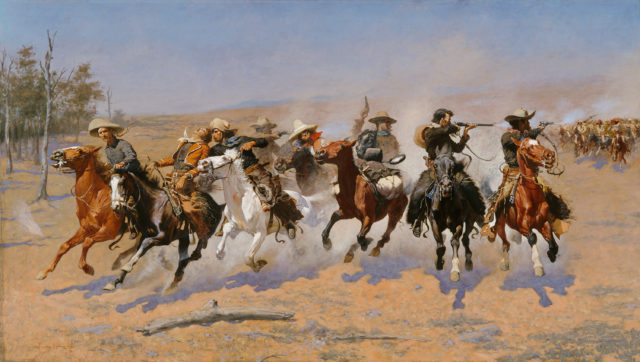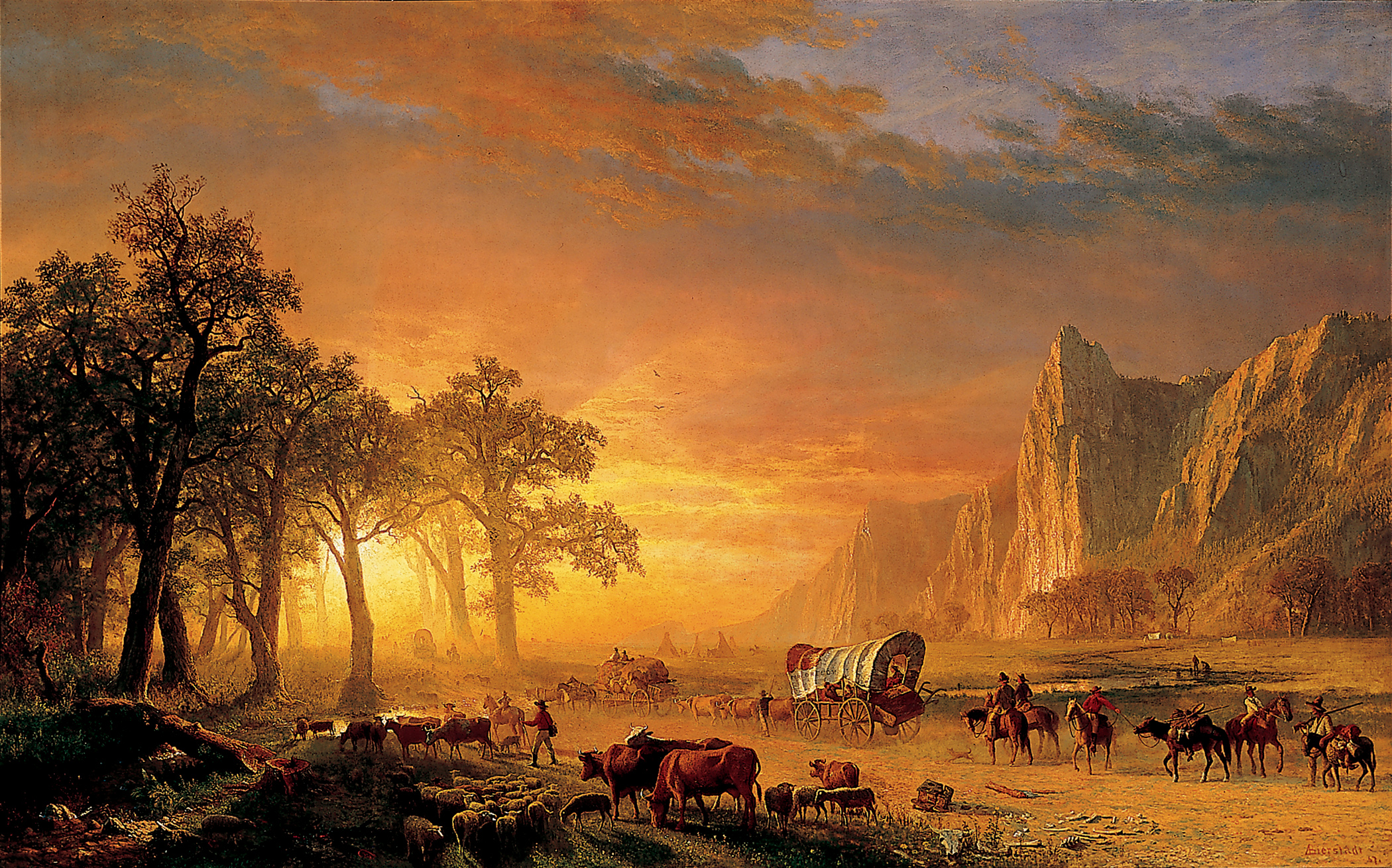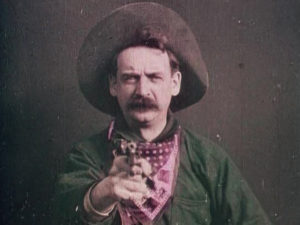
Post-Civil War America was a country in pieces. After years of fighting, the North and the South had to come together as one again. In search of hope, the West became a symbol for the future of America.
“After the Civil War, the West comes to the forefront of the American consciousness,” says Denver Art Museum Curator Thomas Brent Smith. “The North and the South had torn the country apart but the West would heal us back together; it was the third leg of the stool. And it was at that moment that it becomes so important to the American psyche, but also important to American entertainment.”
The West captured the American spirit as one iteration of the American dream. So, it’s not surprising that it was also a source of inspiration for many artists. Denver Art Museum’s exhibit The Western: An Epic in Art and Film chronicles the many facets of the West, analyzing the visual legacy and tracing the roots of how the genre emerged.

Beginning in the post-Civil War era, photographers and painters were drawn to this new landscape to capture the picturesque vistas. Dime novels and illustrated magazines also helped stimulate American imaginations. Film came several decades later, and along with the other elements, a language and style began to evolve.
The exhibit looks at the set, the cast and the drama as the common traits of the genre. The repetition of these tropes — from rolling plains, to cowboys, to train robberies — helped cement the legacy that still persists today.
The cast of the Western is one of its most iconic features. The exhibit explores some of the most common roles including the cavalry trooper, the pioneer woman, the sheriff and the Native American. But as these characters began to emerge, they offered simplistic representations of complex narratives.
“The shorthand of what it does is it creates archetypes but really ignores the individual,” Smith says. “They become a symbolic stereotype, not a specific person with all the nuances of a person. People see them as a character rather than a human, with all of their attributes but also all of their failings.”
This becomes especially problematic with the treatment of Native Americans and women in Westerns. The DAM exhibit presents these issues, but leaves it to the viewer to make up their mind about them.

“There are a lot of issues that arise in telling these stories. We didn’t want to ignore or shy away from the issue, but to present them in a way to gives audiences the opportunity to think and discuss,” Smith says. “We don’t try to give any answers. We try to ask the questions.”
The early-day Western was typically a light-hearted adventure, like Edwin Porter’s The Great Train Robbery of 1903. But as time went on, it became a tool that filmmakers used to dissect societal issues.
“No matter what issues were bubbling up in our society, we seem to always go to the Western because it was a format that American audiences were comfortable with,” Smith says. “Take any issue in American culture and look for a Western. You’d be hard pressed to not find one that talks about it.”
Smith cites films like The Wild Bunch, which he says was director Sam Peckinpah’s statement against the Vietnam War, and Easy Rider, which looks at drug culture. There are dozens of examples in the show, from Thelma and Louise to Brokeback Mountain to Django Unchained.
The exhibit also offers a look at contemporary artists who have used stereotypically Western elements to challenge the genre. For example, in “Boudoir de Berdashe,” Kent Monkman created a tipi furnished in Victorian decor, and inside he screens a film where he dresses up as his alter-ego Miss Chief Eagle Testickle.

Presenting many narratives was an integral factor in creating the show.
“What we tried to do, something that is the backbone of the show, is to say, ‘This is not a simple story,’” Smith says. “As much as we want to think of the Western as something really simple — that it’s about a cowboy in a white hat — it’s not just that, not at all.”
Along with analyzing the Western genre, the exhibit also highlights important filmmakers. It features the work of John Ford, who Smith calls the old master of the Western, and Italian director Sergio Leone, the champion of the “Spaghetti Western.”
In the late ’60s and early ’70s, Italians were making dozens of Westerns. Smith says the films reflected Italian culture in the post-World War II era and the current political state of the country. But Italians weren’t the only ones attracted to the style.
“They were being made all over the world — Russia, Poland, Germany — which speaks to the power of the Western as a platform and as a story and how adaptable it was.”
For more than 150 years, artists have used the West as inspiration to create not only a movie genre, but a collection of artwork that transcends time.
“It’s almost like you get this basic cast and story line, but from those basics, it can become anything and it does,” Smith says. “And in many ways that’s what the exhibit is about.”
As the West offered endless possibility to post-Civil War American culture, the Western continues its promise of endless potential for art.
On the Bill: The Western: An Epic in Art and Film. Denver Art Museum, 100 W. 14th Ave. Parkway. Through Sept. 10.














